How to Do a Chin-Up (Plus, How It’s Different From a Pull-Up)
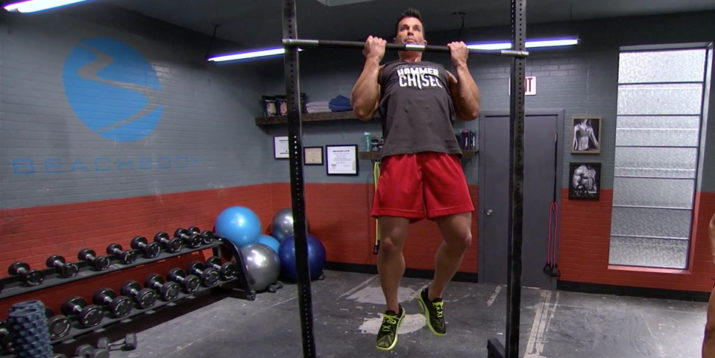
While they might sound and look like essentially the same bodyweight exercise, the chin-up and the pull-up are actually quite different.
They do have some similarities, but when you’re comparing chin-ups vs. pull-ups, the former offers up some unique muscle-building benefits that the latter doesn’t provide.
Here’s a guide on everything you need to know about chin-ups, including technique, tips, and when to perform it over a pull-up.
Chin-Up: Step-by-Step Instructions
Appears in: P90X3 >> The Challenge
- Grab a pull-up or other horizontal bar with an underhand grip that’s slightly wider than shoulder-width, and hang at arm’s length (a position known as a dead hang).
- Pull yourself upward until at least your chin clears the bar, keeping your back straight and core tight.
- Pause, and then lower yourself back to a dead hang.
How to Make the Chin-Up Easier
- Jump into the move. “Do the jumping chin-up, using momentum to get your chin above the chin-up bar, and then lowering yourself as slowly as possible,” says Trevor Thieme, C.S.C.S.
- Use an assistance band. Attach the assist band to the chin-up bar, and put one foot into the loop at the bottom. The shorter you adjust the strap, the more assistance it will give you. As you get stronger, you can lengthen the strap, or remove some of the elastic bands to further reduce the assistance.
How to Make the Chin-Up Harder
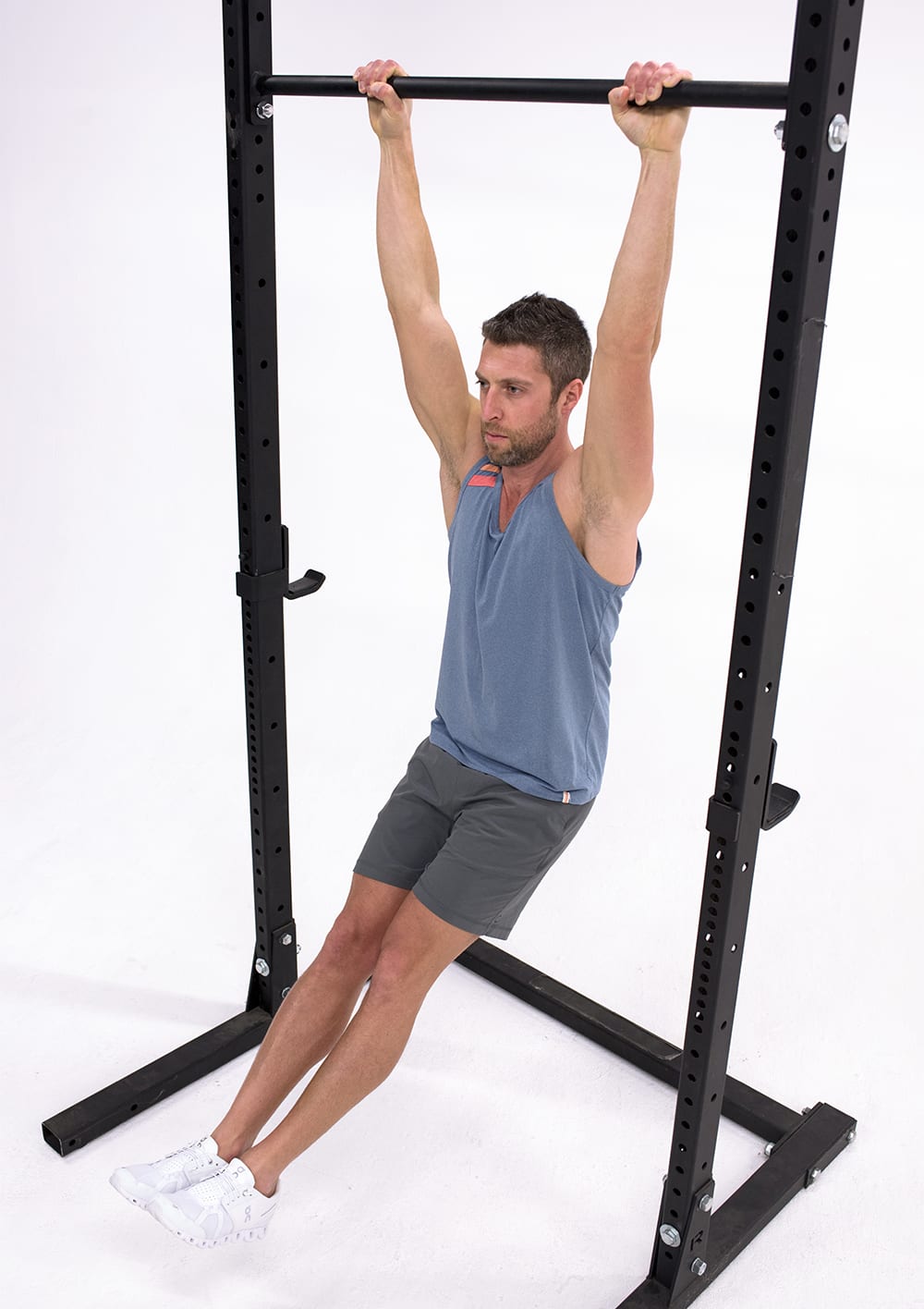
- Lift your legs up a bit. “Instead of crossing your ankles behind you, point your legs slightly in front of you so that your body forms a wide ‘C,'” Thieme says. “That’s called a hollow chin-up, and it’s much harder because of the greater demand on your core.”
- Lift your legs up a lot. An even more difficult version is the pike chin-up, in which you raise your legs straight in front of you so that they’re parallel to the floor and your body forms an ‘L.’
What Can I Do Instead of the Chin-Up?
If you don’t have access to a chin-up bar, you can hit the same muscles that a chin-up activates by doing a lat pulldown.
You don’t even need access to a gym to do this move: Here’s how to do it with a resistance band, as seen in The Master’s Hammer and Chisel >> Iso Speed Hammer.
- Secure a resistance band to a door attachment. Stand back far enough so there is some tension in the band with your arms straight.
- Step back with one foot into a lunge position, holding the handles with an underhand grip (palms facing up). This is the starting position.
- Pull the handles to the sides of your body.
- Pause, and then reverse the movement to return to the starting position.
Bonus Tips for Doing the Chin-Up
- “Keep your core engaged and your body rigid for the duration of each set,” Thieme says. “Without that stability, you won’t be able to tap into your full strength or power.”
- Start and end each rep in a dead hang with your arms completely straight (unless you are doing the jumping variation). That will ensure that you’re always working your muscles through a full range of motion. It will also eliminate any help you get from the stretch reflex, which is the natural tendency of a muscle to return to a shortened state when stretched.
- Imagine there’s an orange between your shoulder blades, and try to squeeze the juice out of it as you lift your body up. This’ll help you engage all the right muscles and get the most out of each rep.
Benefits of the Chin-Up
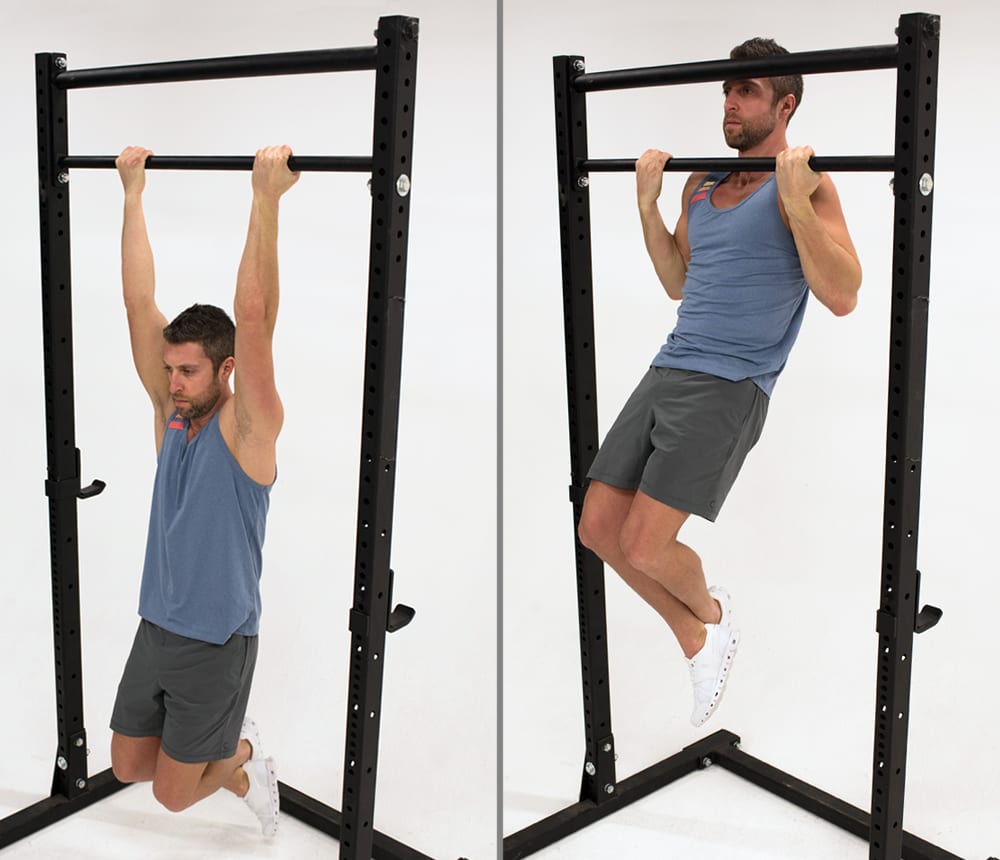
“When it comes to building upper-body strength, few exercises compare to the chin-up,” Thieme says. The reason: It recruits so many muscles to get the job done (more on exactly which muscles it recruits in a bit).
“It’s also the ultimate test of the only kind of strength that matters: relative strength,” he adds.
Relative strength refers to how strong you are for your height and weight. If you can pull up your entire body weight from a dead hang, that’s a good indicator that you’re strong relative to your size.
What Muscles Do Chin-Ups Work?
Chin-ups are a great exercise for hitting multiple muscles: “This move targets the lats and biceps, but it also works the shoulders and muscles throughout the upper back and core,” Thieme says. These muscle include the following:
- Trapezius
- Rhomboids
- Posterior deltoids
But here’s a deeper dive into the two main muscle groups that are worked when you do a chin-up.
Biceps
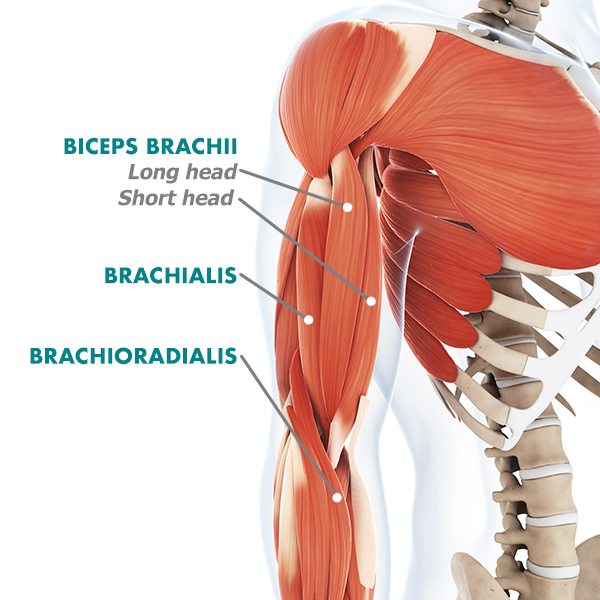
Your biceps are the muscles that bulge when you flex your arms. Each biceps (or more specifically, each biceps brachii) has two heads — the short head and the long head — that help to flex your elbow (as in a biceps curl) and supinate your hand (i.e., turning it from a palm-down to a palm-up position).
Latissimus dorsi
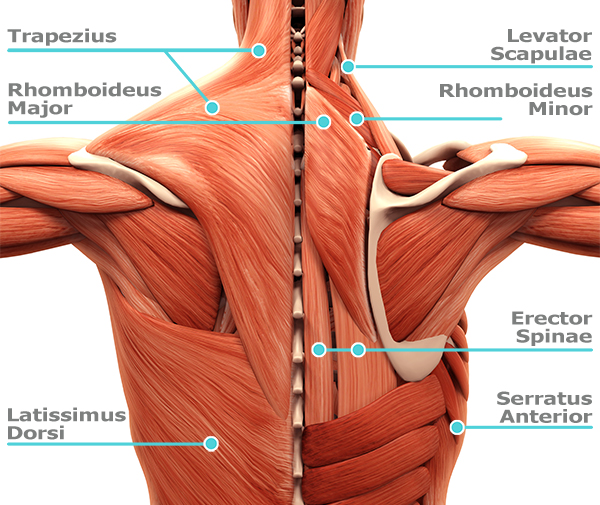
More commonly referred to as a “lat,” this is the largest muscle on your back and spans your mid and lower back.
You have one on each side of your body, and they’re responsible for pulling your arms down and toward you (as in a chin-up) and also rotating your upper arms inward.
When they’re developed, they give your torso an impressive “V” shape.
What’s the Difference Between a Chin-Up and Pull-Up?
It all comes down to a change in grip. With the pull-up, you hold the bar with an overhand (palms facing forward) grip, but with the chin-up you hold the bar with an underhand (palms facing backward) grip.
That simple switch increases the engagement of your biceps, helping you build more strength and size in your arms while still also working your back and shoulders.
It also makes the chin-up slightly easier to perform than the pull-up, which forces your lats to do the vast majority of the work.
Here’s how to do a chin-up properly, and tips on how to add it to your workout routine.
